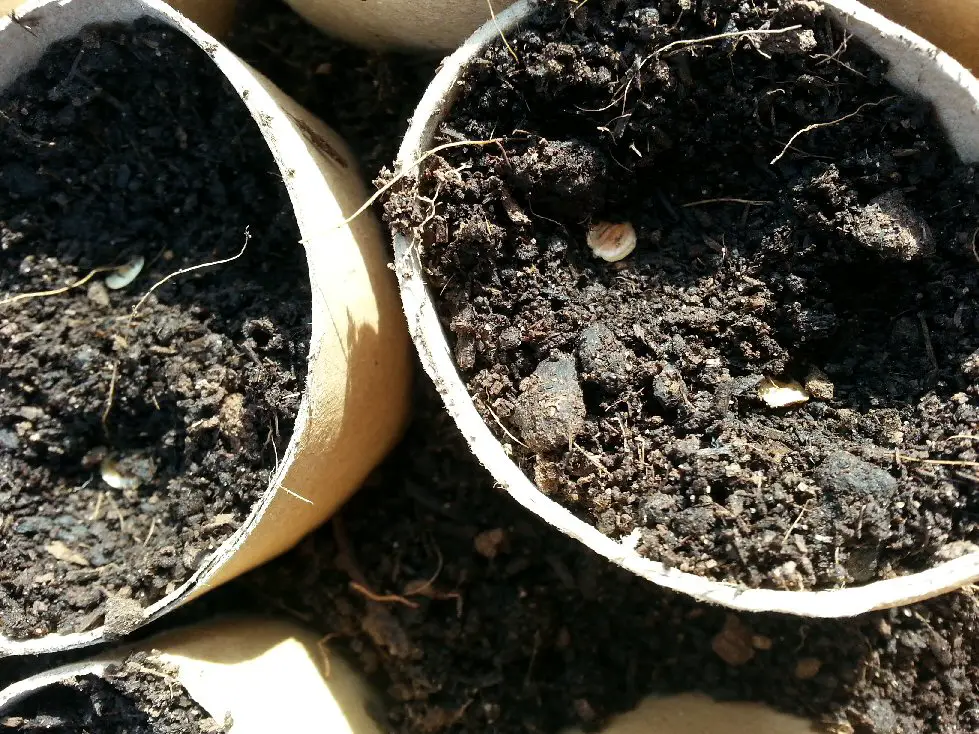Last Updated on April 12, 2024 by Real Men Sow
When I first started outgrowing my own veg, one of the crops I was most excited about growing was the good old parsnip seedlings. Trouble was, I found them a notoriously fickle germinator, and in my first-year dreams of big, chunky roast parsnips didn’t even get to the seedling stage.
I found I wasn’t alone though. Plenty of fellow growers had struggled, but many successful GYOers passed on tips to help with germination, and here are a bunch of the ones that worked best for me.
Tips on Growing the Perfect Parsnip Seedlings
Don’t sow parsnip seedlings too early
Some sow parsnips are often sown as early as February, but I reckon this is way too early and might even go a little way to explain the parsnip’s rep as a poor germinator.
The soil is still very cold in February, and parsnips need 7 – 10 degrees to germinate. Try sowing a batch in late March, April and even early May.
Sowing in a Greenhouse
You can cheat a bit if you’re lucky enough to have a greenhouse or sunny windowsill. Have a go in early March, using fine multi-purpose compost, brought inside for a few days prior to warm up. Then sow seeds in half toilet roll middles, filled with the compost.
I sow two seeds in each roll to double my germination odds. If both germinate, I simply nip one out.
Should you sow your parsnip seedlings in a toilet roll?
Parsnip seedlings don’t like being moved, but the beauty of sowing in toilet roll tubes is that once the parsnips grow two leaves, you can plonk the whole thing in the ground. The cardboard will rot away, leaving the parsnip to grow on.
Remember to harden off the seedlings first though!
Sowing Direct
I’d definitely recommend waiting until April if you’re going to sow direct. Cover the soil with a cloche for a couple of weeks to warm the soil, but if you haven’t got any, try an old black tarpaulin.
I always sow as many seeds as I have, as parsnips seeds need to be fresh every year. You might as well sow the lot as you’ll only end up throwing them all away.
Another tip I picked up for direct sowing, is to cover the seedlings with multi-purpose compost rather than the soil you’ve moved for the row. The compost won’t crust up in the dry and is much easier for the seedlings to grow up through. This is an ace general sowing tip but works especially well with parsnips.
Of course, with loads of parsnips seeds sown, your germination chances increase. Thin seedling out to about six inches apart of you need to.
It’s also an idea to sow a few seeds in toilet rolls anyway, ready to fill in any gaps if germination is patchy.
Oh, and don’t do what I did once and sowed in a blustery wind. Parsnips seeds are very fine and it doesn’t take much to blow them out of your hands!
Be Patient
Parsnips seeds can sometimes take ages to germinate, especially if the weather is slow to warm up. Don’t worry if seedlings haven’t appeared after a few weeks. I’ve had parsnips take nearly 5 weeks to germinate before.
Chitting
Another popular method to try is ‘chitting’. Lay your seeds out on damp kitchen roll, and leave in a sunny spot. Make sure you keep the paper moist, and within a few days the seeds will germinate. Carefully move these into half toilet rolls of compost to grow on.



You don’t really need fresh parsnip seed each year if you are planning on chitting them. Yes, a lot fewer will germinate, but I don’t need that many and there are bajillions in a packet. I chit the seed then put the germinated seed into the deep pot of compost I keep for them. The compost gets pre-warmed by watering with warm, boiled water and is kept inside on the landing (I live in a flat) till they are showing.